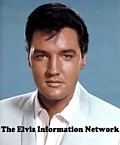Interview with Tony Plews
Author of 'Walk A Lonely Street'
- EIN Interview by Piers Beagley -
|
Tony Plews' 'Walk A Lonely Street: Elvis Presley, Country Music & The True Story of Heartbreak Hotel' is a unique volume that tells the tale of Elvis Presley’s rise to fame as viewed through the lens of his era-defining first hit record, “Heartbreak Hotel”. Presented as a series of consecutive short stories, it offers a new perspective on Presley’s musical and cultural achievements, and reveals the true and dramatic saga behind the breakthrough song that changed the world.
The book, Walk A Lonely Street, spans over one hundred years and involves scores of singers and their songs, it uncovers the truth, placing events in context, and revealing the astonishing depth of Presley’s artistic vision and achievements.
It is unlike any Elvis book that you will have read before.
EIN's Piers Beagley interviewed author Tony Plews to find out how he came up with such an incredible concept for his first book and what discoveries he made along the way...
|
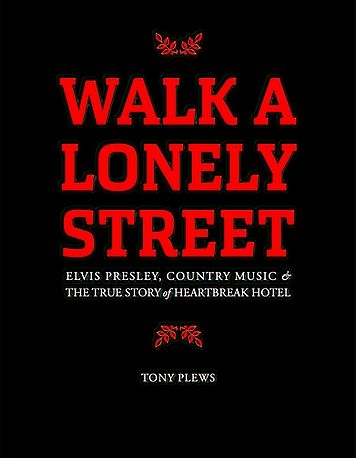 |
Tony Plews author of 'Walk A Lonely Street' - Interviewed by Piers Beagley January 2020
EIN: Thanks for agreeing to an interview. First question. Tommy Durden and / or Mae Boren Axton saw a newspaper article about a man shot dead who "walked a lonely street" and together came up with the song 'Heartbreak Hotel'. How much more do we need to know? What inspired you to investigate the story to so much depth?
Tony Plews: Thanks for the invitation to be interviewed!
Well, as it turns out, there was a lot more to know about “Heartbreak Hotel”. As well as telling the tale of what actually did happen in terms of inspiring and writing the song, I’ve also focused on establishing context for the characters, and there are lots of characters involved in this saga.
The first half of the book sets the scene, and is an in-depth look at the developing world of country music and people like Steve Sholes, Buddy Killen, Jack Stapp, Mae Boren Axton, Tommy Durden, Glenn Reeves and dozens more. When you then arrive at the second part of the book (Elvis’ career from 5th July 1954 – 4th July 1956), people’s actions, reactions and interactions make much more sense because you now have some idea of who they are and what they’ve experienced.
My inspiration to investigate the song came from an online conversation on FECC in 2011. The legend of “Heartbreak Hotel” is one of the first things you learn as an Elvis fan (the anonymous suicide note, etc), and I was surprised to discover in that virtual conversation that there were so many holes in the original story, and so many conflicting memories from the participants. I felt challenged to start digging, and realised that to comprehend what was going on, I would need to develop a greater understanding of that world so I immersed myself in pre-1954 hillbilly music. And as per Mae Boren Axton’s hillbilly conversion in 1950, I fell in love with the songs and the people, and felt an obligation to tell their stories properly.
EIN: How long did it take you to research 'Walk A Lonely Street'?
TP: I’m not sure the digging ever really ends until publication, but the basic idea of what had happened regarding the song was in my head after two years, and the main body of the investigation was done within about five years. It was wonderfully enjoyable putting the jigsaw together and it led down some fascinating avenues, especially when I decided to listen afresh to “That’s All Right” and realised that it was not just a cover of the Crudup song. That opened my mind to the fact that Elvis Presley was a much more consciously-creative artist than I’d ever imagined.
EIN: How and when did your interest in Elvis Presley begin?
TP: Elvis was always just kind of “there” on the radio growing up in the UK during the late 1960s and 1970s, but I remember three specific events that sealed my fascination. Firstly, I requested and received the Elvis’ 40 Greatest Hits double-LP as a Christmas gift in 1974, when I was aged nine. I loved that album and played it to death for years to come. Secondly, on 17th August 1977, BBC-TV broadcast That’s The Way It Is as a tribute to Elvis, and I’d never seen anything as glorious or as cool in my entire life, and that’s when I became a serious fan. Thirdly, in the early 1980s, a friend loaned me a copy of the Elvis’ Recording Sessions book and I became obsessed with the details therein. In fact, lacking a scanner or photocopier, I copied the entire book longhand and it triggered not only a fascination with Elvis, but also with music in general.
EIN: The eighties was not a good period for Elvis. What kept you interested when all the media at the time seemed to want to destroy his legacy?
TP: Quite simply, the artist I heard singing on the records had nothing to do with the man who was being mercilessly and unfairly slandered by the tabloid press and by Goldman. I’d missed the posthumous bootleg explosion but Ernst started getting involved in the official creative process during this decade and that was such a boost. I pretty much kept my devotion to Elvis’ music to myself, making my own compilations on cassette tape, buying videos, books, magazines and records, and all the while trying to make sense of his career, revelling in the many great moments and searching through the lesser moments for the hidden gems.
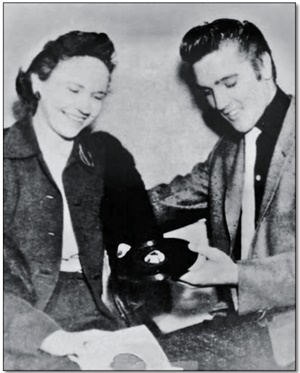 |
EIN: Your book starts in 1865, 90 years before the recording of "Heartbreak Hotel", how on earth did you choose that as the kick-off?
TP: Since the mid-1980s, I’ve seen Elvis Presley’s music as part of a much bigger picture in terms of American music, culture and history, and wanted my book to allude to this as much as possible, so it was inevitable that I’d be referencing the War Between the States and the civil rights movement, because these were events that were relevant to Elvis Presley and to all Southern families.
Early on in my research, I noted a curious number of coincidences with regard to names, dates, and happenings and decided to make that “circle-of-life” scenario a feature of the book. I’d read that Lincoln requested the playing of “Dixie” outside the White House on the very day that Act 1 Scene 1 of Love Me Tender takes place, and I was intrigued by this. When I dug deeper and found that a certain Colonel Parker also played a part in these events then this starting point for the saga was set in stone. I’ve had several readers email me saying that they were hooked on the story from that first mention of Colonel Parker in the first sentence of the first page.
EIN: Writers often use the post-it note method for structuring a narrative. How on earth did you assemble your 563 tales into a workable linear narrative?
TP: “Slowly”, would be the obvious answer to that question! The non-Elvis parts of the book were written thematically or relating to characters, rather than chronologically.
For example, I would spend a couple of months researching someone like Buddy Killen via his autobiography and the Billboard digital archives, and I would make notes on, say, six or seven key points in his life (a prescient moment in his youth, how he became involved in the music business, how he met other relevant people in the story, how he was drawn into the “Heartbreak Hotel saga, etc), but I was always looking for the best incidents from a story-telling perspective. I’d then add all of these notes to a very long document that I called my “framework of facts” in date order. I’d then write the relevant half-dozen chapters for that character, trying to keep to my one chapter per page rule, and then I’d move on to the next character and do the same, and would slot in their stories, and then the next character and so on.
After this, I smoothed out the transitions between the chapters, giving a nod to what was coming or referencing what had been. There were some stories that could not be precisely dated but I knew roughly when they’d happened and was able to move these for effect or to places that helped the flow of the narrative.
EIN: It's part biography, part investigation, part reference and part thriller, how did you come up with your amazing concept?
TP: Initially, this was going to be a lengthy essay to be published online, but after a year I began toying with the idea of it being a book, and two approaches came to mind.
Firstly, I considered just printing a tidied-up version of the “framework of facts” and allowing the story to tell itself without a narrative. Secondly, I recognised early on that the saga had a pulp-fiction feel about it, sort of a cheap detective novel theme, and I wondered about writing a short story in that precise genre focusing on summer 1955 – early 1956, and not naming any of the characters, just referring to them as “the singer”, “the manager”, “the artist”, etc. Eventually, I merged those two ideas and re-wrote the framework of facts in a specific voice, and that format remained in place from that point onwards.
It was always important to present the saga as a selection of “tales to be told” in homage to the song lyrics. I liked that idea of dozens of broken-hearted lovers leaning up against a bar counter in a hotel over many years, telling a series of random stories -- some sad, some tragic, some ironically amusing -- while the barman just listens and files them all in his memory.
EIN: Did any other author's work inspire you?
TP: I’m not aware of a specific author that has influenced my writing or the book, but I was smitten with Griel Marcus’ Mystery Train as a teenager, and embraced his idea of Elvis being part of a bigger picture, and I loved Marcus’ bold and dramatic use of language when describing Elvis’ music and his contribution to modern culture. Retrospectively, I recognise that intention in my own work, although I don’t think I’ll ever write anything as good as “If ever there was music that bleeds, this was it.”
EIN: The big bang of "That's All Right" doesn't even appear until close to half-way through the book. That truly is a long wait for to anyone wanting to get to Elvis' stunning first recording. Were you tempted to shorten the build up at times?
TP: It was my editor/sounding board, Gordon Minto, who first pointed out to me several years ago when looking at a half-finished book that this was going to be a very long volume, and I’d given no thought to that until then. I have pondered the length of the pre-1954 section (although Elvis does of course appear several times in there), but I stand by my conviction that the greater the reader’s investment, the greater the pay-off.
Some of my own favourite cultural experiences have come from a long gestation period, and the feeling you get when you come to a satisfying conclusion is quite special. I loved the decade-long MCU saga, for example, or the “Hodor” episode of Game of Thrones -- these were deeply rewarding because I’d invested time in getting to know the characters.
I’m re-reading Walk A Lonely Street now, and have just reached the beginning of part 2 and it feels surprisingly good to meet the likes of Slim Whitman, Bob Ross and Tom Parker as characters who are now in the Elvis story, having learned so much about their own backstories in part 1.
EIN: Any true Elvis fan will have already read multiple versions of how Elvis' "That's All Right" came to fruition, but your version is the first to make me truly feel that I was there in Sun Studios watching the historic event. Have you been to Sun Studios, was there a trick to you getting the feeling of that special day?
TP: That’s very high praise, thank you. I’ve not been to Sun or indeed to America. If that particular chapter succeeds then perhaps it’s because of the unusual/unique format of the book: I’m writing non-fiction but using fiction techniques, in particular introducing speech. I really have no idea what people actually said in the studio on that evening (although I did listen to the surviving tapes in minute detail), but tried to put myself in the characters’ shoes and make a logical guess as to what might have been going through their minds. For example, if anyone was going to be cracking jokes that night it would have been Bill, and I can’t imagine Elvis would have had much to say at all, when considering his shy nature and his understandable nerves.
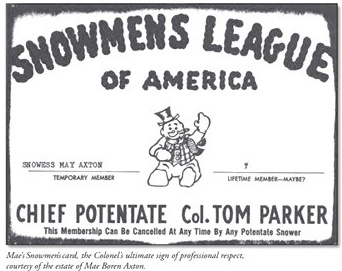 |
EIN: You live in the UK yet tracked down family members and friends in the US of Mae Boren Axton, Tommy Durden and even Delta Pinney (who shot that lonely man). How on earth did you find these connections and what did they think when you came calling?
TP: The internet really is the researcher’s friend. The Pinney family was my first point of contact via Facebook, and they could not have been more helpful, especially bearing in mind they knew nothing of their father’s involvement. Delta’s daughter, Frances, has become a good friend and she was only too happy to send photographs of her dad and his store, and also to proof-check the relevant chapters. We were about two years into our correspondence and she’d already sent some great pictures as well as her memories of the shooting and, assuming we were all done, I thanked her for her time and asked if there was anything else she might like to contribute to the book. And that’s when she said in a very matter-of-fact way, “Well, we do have the police report with a photograph of the crime scene.” When I saw that picture, I asked her to think long and hard about whether she wanted it to be released to the public, but she was very clear that it was okay to include it in the illustration section. It was when I first saw that photograph that the gravity of the story hit me, and I realised the importance of getting the tone of the book right.
The Axton family came on board only this year and were tricky to track down, but once I’d found my way in then they could not have been more kind. I’d spent some time trying to contact the publishers of Mae’s 1973 memoirs but they’ve long since gone out of business, and all I wanted was permission to use some of the photos from that book (Tommy and Mae together, the Snowmen card) but Heather Axton (grand-daughter) sent through several other good pictures including the one of Mae seated at the piano. They as a family are all hugely proud of Mae and her accomplishments and were happy for Mae to receive her time in the spotlight.
The Tommy Durden connection was quite lovely: very early in my research I came across a blog written by someone who said he’d known Tommy well and felt there was more to the story than had been told. I left a message on the blog hoping to get a response. Six years later (!) that response came and I was put in touch with Gary Rue and Art Kenney (Tommy’s son-in-law) who oversee the Durden legacy and were super-helpful in sending photographs, and invited me to come and root through the boxes of relevant paperwork which, being UK-based, I was unable to do, so I placed myself in their hands and was not disappointed with their choice of scans. Their love for Tommy came through clearly, and I was happy to clarify my intention to portray Mr Durden as the good guy that he undoubtedly was and to give him his long-overdue recognition.
I phoned Mitchell Pomper, Agnes Sampson’s son, a couple of years ago, and he was pleased to pitch in, and sent pictures and documents and placed no restrictions on how I approached the topic, and I appreciated this. My call to Agnes herself was a special moment, and I tracked her down via The Accordion Club of Chicago, of all places. I’m delighted that the early reviewers picked up on the poignancy of that chapter because that’s certainly how it felt to me.
EIN: I saw the Arena program 'Tales of Rock 'n' Roll: Heartbreak Hotel' and believed the newspaper clipping about "I Walk A Lonely Street" to be genuine. Being a "BBC" program what made you consider that it might have been a fake?
TP: I originally had given no thought to the BBC newspaper being faked and was happy to go with it, but a good friend in America, who kindly acted as a great foil for my early enquiries and thoughts, queried a number of elements (awkward layout, etc), and this tied in with my requests to libraries in Florida who checked the Miami Herald for that date and several weeks either side, confirming my friend’s doubts. At this point I concluded that Mae’s tale was a cover story of some nature. The trick was to figure out what she was covering up and why.
EIN: There are an amazing number of characters featured in your book, some I knew nothing about such as Jack Stapp or "Groovey Joe Poovey" while others I have always wanted to know more about such as Tommy Sands, Buddy Killen or Glenn Reeves. How did you decide who to include and who to leave aside?
TP: The vast cast pretty much wrote their own places in the manuscript. Even people who played a tiny or indirect part (such as Joe Poovey, or Helen Hall) had something to say about the music business at the time, or how easy it was to fail (despite having great talent) due to circumstances, such as a car crash.
Pursuing the likes of Buddy Killen was fascinating, and Jack Stapp’s story was also so intriguing. My favourite cast member, though, may well be Bob Ross, Parker’s stepson, and I had great fun tracking his career through the Billboard archives following his multiple connections with Hill & Range, RCA, George Morgan, Hank Snow, Slim Whitman, et al. I also tried to avoid just talking about corporations or general events, and looked for the people involved in those tales to give the reader someone in whom they could take an interest.
EIN: There's a certain Colonel Parker who features prominently in the book. How did your feelings change towards him the more you researched his background?
TP: I’ve never been in any doubt about my feelings regarding Parker -- he was a fascinating, Dickensian-like character, but I’m not sure if I would have liked him as a person. I’ve tried to avoid making him the panto-villain as we’d say in the UK, and he had many redeeming qualities, I’m sure, as a husband and father. Tommy Sands really liked him and Eddy Arnold was a fan. For the most part, the people in my book played with their hands above the table, but Parker always seemed to have hidden cards stashed about his person.
I’m interested in Tom Hanks’ portrayal of the Colonel in the forthcoming Baz Luhrmann film, in that Hanks often plays the “everyman” character in his movies, the person we all get behind and root for, which would be quite a challenge in my opinion.
EIN: Bob Neal and Steve Sholes get short shrift in Elvis general biographies. Was it part of your aim to expand their and other stories in their contribution to Rock'n'Roll?
TP: Bob and Steve were long overdue for recognition in the Elvis story, especially as both seem to have been very likeable, hard-working family men, who just did their jobs to the best of their ability. Marion falls into the “overlooked” category too, as do one or two others, and I took great pleasure in tracking their histories, which helped make more sense of their actions during the critical 1954-1956 period. With Steve, for example, it was much easier to understand how he could be so dismissive of Parker’s pushing of Elvis when you realise the Colonel had already thrust three dead ducks in Sholes’ direction. I have some lovely photos of Steve in his college band days, and other bits of interest that I couldn’t fit in the book, but it all helped to humanise the characters during the writing.
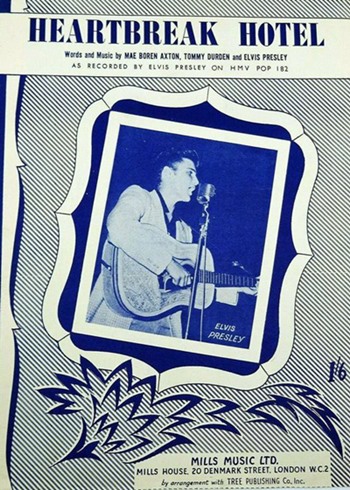 |
EIN: Did you have any issues in getting the book to print?
TP: Copyright issues were the major problem. “Heartbreak Hotel” as a song is owned by two companies and it was quite bizarre to hear phrases during negotiations like, “We think we own 83% of the song and they own 17% of the song. When you speak to the other company could you please come back and tell us what they think!” Tracking down ownership of fifty year-old articles from now defunct newspapers is also an interesting challenge. And having established ownership, getting people to respond to your enquiry, even when you’re offering money for usage, is not straightforward. Getty Images had been most kind for the first five years of pre-publicity and allowed me to use a favourite image of Elvis at a discount rate during that period. When I went to renew the contract, the price of the picture had quintupled and I was obliged to redesign the cover, which was unfortunate.
EIN: Who is George Smith in the Tony Plews story?
TP: George Smith was an elusive ancestor of mine. Several years ago, my brother and I started investigating our family tree and discovered a mysterious direct antecedent called George Smith. In the UK, George Smith is one of the most common names imaginable, so the chances of us being able to establish his history were very slim. But, we resolved to keep knocking on doors and asking questions, and after several months of digging and working, we finally found our man so to speak. This happened at about the time I joined various online communities so I decided to take the name as a digital nom de plume. When I started investigating “Heartbreak Hotel”, I applied all of the lessons I’d learned when searching for George Smith, and I just kept knocking on doors and asking questions.
EIN: Did you have to subject your family to unending hours of pre 1956 country music and how did they cope?
TP: My family (wife and two young adult sons) are well used to dad’s obsessions and are all music lovers anyway. I’d generally listen to the music on headphones, but they’d often find me sitting at the PC, typing away and they’d know what I was working on. As mentioned in the pre-amble of the book, it was my wife who originally told me that my book synopsis had legs and was worth pursuing, and it was she who pointed out last year that the manuscript would never actually feel like I had finished it and the time had come to publish regardless. She works with post-graduate students in a university and she’s very familiar with this scenario.
EIN: If you are not listening to Elvis, who else might be on your turntable?
TP: My fascination with Elvis led to an obsession with music in general and, bar extreme thrash metal or deep jazz, there’s pretty much every type of music sitting on my shelf among the thousands of CDs, from the golden age of the great American songbook through to Stormzy. I’ve discovered that if I’m able to speak comfortably and respectfully with other people about their favourite bands or singers, I can easily drop an Elvis moment into that conversation, and it leads to some good discussions.
EIN: Your website has a tremendous bonus 'Blog' about other Elvis topics. Do you have too much spare time as what made you decide to also do this?
TP: Anyone who knows me well would chuckle at the notion of having too much spare time! The blog came about as a way of demonstrating the nature of the volume I was writing: it’s an Elvis book but it’s not just an Elvis book. Added to which, I have a genuine love of words and writing, as you’ll note from the over-long answers to your concise questions.
EIN: Have you been pleased with the reviews and reactions so far?
TP: I have been delighted with the reactions. My book is very different to what has gone before, and I had concerns as to whether people would “get it”, so to speak. I sent out four advance copies to people I knew and respected in the Elvis world and their reviews were overwhelmingly positive, all of them understanding the concept and grasping what it was I was trying to do. Early reviews from fans who are now part way through the book have also been very encouraging. If you’ve read and enjoyed the book, do please add a review on Amazon.
EIN: What now for Tony Plews?
TP: I’m currently re-reading the book and correcting a handful of annoying typos, and also trying to spread the word to people who might be interested in reading a different take on the Elvis story. At some point in 2021, I will publish a Kindle version, but that’ll take a while to format properly. Like most people around the world, I’m hoping to try and get my life back to normal, whatever that looks like.
I currently have no plans to write something new, certainly not anything that will take ten years to complete, but I’ve really enjoyed the whole research and writing process, so who knows what the future holds.
Interview by Piers Beagley.
-Copyright EIN January 2021
EIN Website content © Copyright the Elvis Information Network.
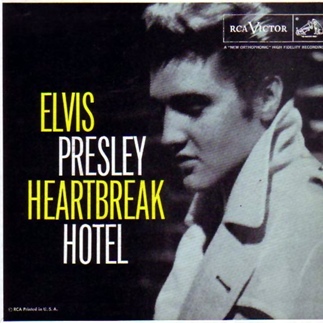 |
Go here to AMAZON to purchase >>> |
|
.
|
.
|
'Walk A Lonely Street' Book Review: Recently published Tony Plews, 'Walk A Lonely Street: Elvis Presley, Country Music & The True Story of Heartbreak Hotel' is a unique volume that tells the tale of Elvis Presley’s rise to fame as viewed through the lens of his era-defining first hit record, “Heartbreak Hotel”. Presented as a series of consecutive short stories, it offers a new perspective on Presley’s musical and cultural achievements, and reveals the true and dramatic saga behind the breakthrough song that changed the world.
In EIN Piers Beagley's detailed review he discovers that.. the true joy of this book is Tony Plews’ delightful and engaging writing style. His detailed research and his mix of facts and imagination blend together to create an emotional narrative that really draws the reader in. At times he also adds a nice British, somewhat droll, sense of humour that can make you laugh out loud. A totally enthralling musical journey, Tony Plews writes with a truly engaging, colourful and passionate style. If your love of Elvis is based upon his amazing musical legacy then this is the book for you....
Go here to EIN's 'Walk A Lonely Street' in-depth review
Coming Wednesday.. EIN interviews author Tony Plews
(Book Review, Source;ElvisInformationNetwork) |
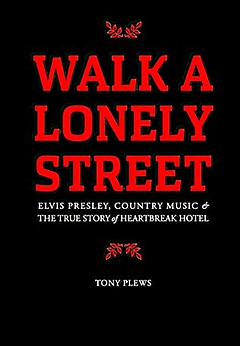 |
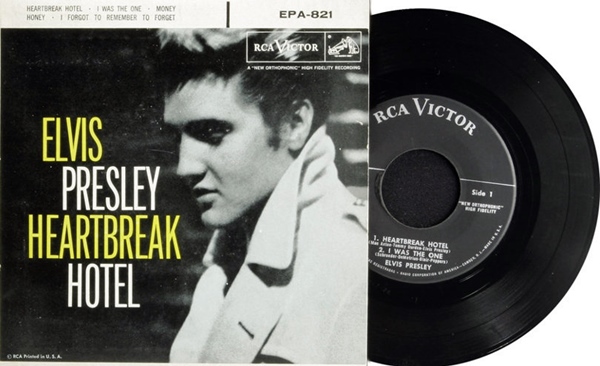 |
‘Bicycle Rider: Thoughts on The Searcher’: One of EIN’s most insightful contributors George Smith has written a stunning essay on the new HBO documentary.
In his review ‘George Smith’ captures the essence of the narrative, Zimny’s production decisions and notes the difficulty of having to create a documentary about Elvis’ music and having to keep it under 4 hours.
His review includes,
“The genius of the documentary though, is in its decision to present Elvis Presley to all viewers in a new and unexpected fashion. For the devotees this is realised through the constant use of new film (professional and amateur) and studio outtakes: it keeps the faithful on their toes and creates the impression of seeing and hearing Elvis anew. This is why Zimny insisted on using the alternative Aloha, the handheld “Trilogy” and “Never Been to Spain”, the “Burning Love” rehearsal, the “If I Can Dream” outtake, the off-air segments from ’68, the non-masters of “Lonely Man”, “Hurt”, “Suspicious Minds”, “Loving You”.. It is a deliberate and clever approach which was much appreciated by this writer.”
Go here to “Bicycle Rider: Thoughts on The Searcher” this is essential reading.
(Spotlight; Source;GeorgeSmith/ElvisInfoNet)
|
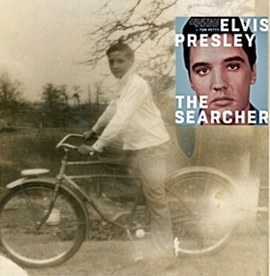 |
Elvis "Non Stop Erotic Cabaret": 45 years ago today Elvis’ performance from the midnight show at the Las Vegas International on August 12, 1970 has been described by his record company as " Probably the best live concert ever recorded by Elvis Presley."
This stunning performance has been released by SONY on last year's "That's The Way It Is' Deluxe box-set as well as the June 2000 BMG 'That’s The Way It Is: Special Edition' 3cd set.
When he decided to investigate in-depth author George Smith discovered however that this 1970 Midnight performance was not just "the best live concert ever recorded by Elvis Presley"; it is an almost spiritual experience. But, like most great albums and concerts of that nature, it cannot be rushed: one must sit and listen to the show in its entirety. Then, and only then, can the genius of Elvis the performer be fully appreciated.
The show takes the form of a metaphorical sexual act with Elvis wooing, loving, and then ravishing his audience before twice taking it to an exhausting musical peak.
(Spotlight; Source;GeorgeSmith/ElvisInfoNet) |
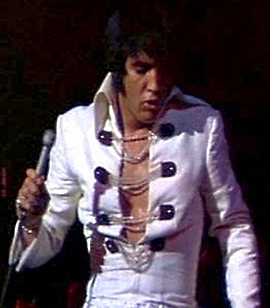 |
EIN Website content © Copyright the Elvis Information Network.
Elvis Presley, Elvis and Graceland are trademarks of Elvis Presley Enterprises.
The Elvis Information Network has been running since 1986 and is an EPE officially recognised Elvis fan club.
|
|



